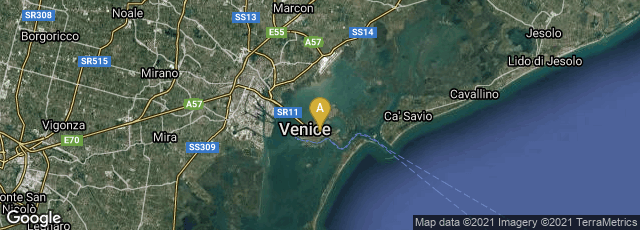

On May 25, 1482 printer Erhard Ratdolt of Venice issued the first printed edition (editio princeps) of Euclid's Elements—Praeclarissimus liber elementorum Euclidis in artem geometriae. Ratdolt's text was based upon a translation from Arabic to Latin, presumably made by Abelard of Bath in the 12th century, edited and annotated by Giovanni Compano (Campanus of Novara)in the 13th century. The first printed edition of Euclid was the first substantial book to contain geometrical figures, of which it included over 400.
Ratdolt printed several copies with a dedicatory epistle in gold letters, including a dedication copy to the Doge of Venice. Of these, seven copies are preserved. To accomplish this technical feat:
"Ratdolt developed an innovative technique derived from the methods used by bookbinders to stamp gold on leather. This involved strewing a powdered bonding agent (either resin or dried albumen) on the page and probably heating the metal types so that the gold-leaf would stick to the paper. For his 1488 edition of the 'Chronica Hungarorum', Ratdolt employed a simpler method using golden printing ink. His technique of printing in golden letters was first copied in 1499 by the Venetian printer Zacharias Kallierges" (Wagner, Als die Lettern laufen lernten. Inkunabeln aus der Bayerischen Staatsbibliothek München [2009] no. 20).
In order to print the unusually large number of complex geometrical diagrams, usually containing type, in the margins Ratdolt used printer's "rules," i.e. thin strips of metal, type high, which he bent and cut and adjusted and set into a substance, perhaps plaster, that would both hold them (and pieces of type) in place. See Renzo Baldasso, "La stampa dell'editio princeps degli Elementi di Euclide (Venezia, Erhard Ratdolt, 1482)", The Books of Venice/Il libro veneziano, ed. Lisa Pon and Craig Kallendorf (2009) 61-100.
There are two distinct states of the first edition. These Renzo Baldasso designated in 2013 as the "standard" version and the "variant" version, of which far fewer copies are known. The variant version has leaves a1-a9 set differently from the standard version: the heading on a1v is in two lines rather than three and is set in the same type as the text rather than heading type; the three-sided woodcut border and woodcut initial P are added to a2r; the headline in red on a2r begins "Preclarissimus liber elementorum"; and headlines do not begin until a10r. "The two outer pages of sheet c1 also differ, having been evidently reprinted owing to errors in the text and the diagram. . . of the 12th proposition of the 4th book" (B.M.C. vol. 5, 285-286.). Baldasso, "Printing for the Doge: On the First Quire of the First Edition of the Liber elementorum Euclidis," La Bibliofilia, 115 (2013) 525-552.
Characterized as the most famous textbook ever published, Euclid's Elements was one of the most widely printed and studied texts for the next 500 years. It has traditionally been considered one of the most printed texts after the Bible, with over 1000 editions issued. It is certainly the most printed of all mathematical texts since the invention of printing.
In November 2013 a digital facsimile of one of the copies with the dedication printed in gold was available from the Bayerische Staatsbibliothek at this link.
Based on the unusually large number of surviving copies, Ratdolt printed an edition considerably larger than the 300 copies considered average for a 15th century print run. You can view the long list of institutions which hold a copy at ISTC no. ie00113000.
(Thanks to William P. Watson for drawing my attention to to Renzo Baldasso's 2013 paper clarifying the two states of Ratdolt's edition. 10-22-2022)